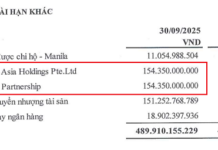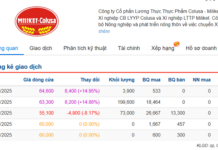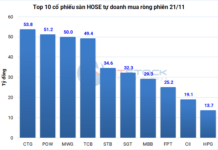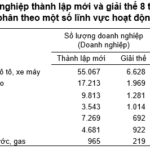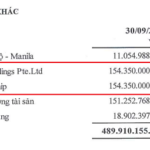
The General Statistics Office has released a report on the labor and employment situation for Q3 and the first nine months of 2025. The report highlights positive trends, with increases in the labor force, employed population, and average monthly income compared to the previous quarter and the same period last year. Unemployment and underemployment rates have decreased during the same periods.
For the first nine months of 2025, the labor force aged 15 and above reached 53.1 million, an increase of 556,300 compared to the same period last year. Employed individuals totaled 52.0 million, up by 552,300, with an unemployment rate of 2.22% and an underemployment rate of 1.65%.
Labor Force
In Q3 2025, the labor force aged 15 and above was estimated at 53.3 million, an increase of 254,500 from the previous quarter and 583,600 from the same period last year. The labor force participation rate was 68.6%, up 0.1 percentage points from the previous quarter and unchanged from the same period last year. For the first nine months of 2025, the labor force participation rate was 68.4%, down 0.2 percentage points year-on-year.
The proportion of trained workers with degrees or certificates in Q3 2025 was 29.5%, up 0.4 percentage points from the previous quarter and 1.0 percentage points from the same period last year, indicating an improvement in labor quality.
Employed Population
In Q3 2025, the employed population reached 52.3 million, an increase of 261,300 from the previous quarter and 580,800 from the same period last year. Urban employment increased by 897,100 to 21.1 million, while rural employment decreased by 635,800 to 31.2 million.
By economic sector, agriculture, forestry, and fisheries employed 13.4 million (25.6%); industry and construction, 17.5 million (33.5%); and services, 21.4 million (40.9%).
For the first nine months of 2025, the employed population was 52.0 million, up 552,300 year-on-year. Urban employment increased by 644,800 to 20.4 million, while rural employment decreased by 92,500 to 31.6 million.
By economic sector, agriculture, forestry, and fisheries employed 13.4 million (25.8%), down 263,700; industry and construction, 17.4 million (33.4%), up 318,100; and services, 21.2 million (40.8%), up 497,900.
While employment is growing, the labor market remains unstable due to a high proportion of informal workers. In Q3 2025, informal workers totaled 32.6 million (62.4% of the employed population), down 1.1 percentage points from the previous quarter and 1.5 percentage points year-on-year.
For the first nine months of 2025, the informal employment rate was 63.4%, down 1.2 percentage points year-on-year. Urban informal employment was 47.6%, down 1.7 percentage points; rural, 73.6%, down 0.6 percentage points; male, 66.7%, down 1.1 percentage points; and female, 59.6%, down 1.5 percentage points. Despite remaining high, the declining trend suggests a shift towards formal employment opportunities.
Underemployment
In Q3 2025, underemployed individuals totaled 696,500, down 102,700 from the previous quarter and 166,900 year-on-year. The underemployment rate was 1.50%, down 0.23 percentage points from the previous quarter and 0.37 percentage points year-on-year. Urban underemployment was 1.26%, and rural, 1.66%.
For the first nine months of 2025, underemployed individuals totaled 764,200, down 150,600 year-on-year. The underemployment rate was 1.65%, down 0.34 percentage points year-on-year. Urban underemployment was 1.24%, down 0.04 percentage points; rural, 1.92%, down 0.54 percentage points.
Average Income
In Q3 2025, the average monthly income was 8.4 million VND, up 124,000 VND from Q2 2025 and 748,000 VND year-on-year. Male workers earned 9.4 million VND, females 7.2 million VND; urban workers, 10.1 million VND, and rural workers, 7.2 million VND.
For the first nine months of 2025, the average monthly income was 8.3 million VND, up 10.0% (756,000 VND) year-on-year. Male workers earned 9.3 million VND, females 7.1 million VND; urban workers, 10.0 million VND, and rural workers, 7.2 million VND.
Unemployment Rate
In Q3 2025, the unemployment rate was 2.22%, down 0.02 percentage points from the previous quarter and 0.01 percentage points year-on-year. Urban unemployment was 2.73%, and rural, 1.86%.
For the first nine months of 2025, the unemployment rate was 2.22%, down 0.04 percentage points year-on-year. Urban unemployment was 2.53%, and rural, 2.00%.
Youth unemployment (ages 15-24) in Q3 2025 was 9.03%, up 0.84 percentage points from the previous quarter and 1.30 percentage points year-on-year. Urban youth unemployment was 12.42%, and rural, 6.86%. Approximately 1.6 million youth were unemployed and not in education or training, representing 11.5% of the youth population. Rural youth unemployment was 13.0%, urban 9.5%; female youth, 13.3%, and male youth, 9.8%.
For the first nine months of 2025, youth unemployment was 8.38%, up 0.47 percentage points year-on-year. Urban youth unemployment was 11.24%, up 1.68 percentage points; rural, 6.75%, down 0.30 percentage points.
Underutilized Labor
Vietnam’s underutilized labor rate typically hovers around 4.0%. It peaked at 10.4% in Q3 2021 due to the COVID-19 pandemic. In Q3 2025, the rate was 3.4% (approximately 1.83 million individuals).
Urban underutilized labor was 3.5%, down 0.4 percentage points from the previous quarter; rural, 3.4%, down 0.5 percentage points.
For the first nine months of 2025, the underutilized labor rate was 3.7%, down 0.6 percentage points year-on-year. Urban underutilized labor was 3.6%, down 0.2 percentage points; rural, 3.8%, down 0.8 percentage points.
Self-Employed Workers
In Q3 2025, self-employed workers totaled 3.8 million, down 72,500 from the previous quarter and 76,600 year-on-year.
For the first nine months of 2025, self-employed workers totaled 3.8 million, down 83,400 year-on-year. Females accounted for 62.7%, and rural workers, 87.0%.
“A Flourishing Business Landscape: 20,500 New Enterprises Across the Nation in the First Eight Months”
“In August 2025, Vietnam witnessed the establishment of 20.5 thousand new enterprises with a remarkable registered capital of 326.1 thousand billion VND and 106.9 thousand registered employees. These figures reflect a significant growth compared to July, with a 23.9% increase in the number of enterprises, nearly a 2.8-fold surge in registered capital, and a 35.4% rise in the number of employees.”
August 2025 PMI: New Orders and Employment Slump
The S&P Global Vietnam Manufacturing Purchasing Managers’ Index (PMI), a pivotal gauge of the health of the manufacturing sector, remained above the 50.0 no-change mark in August. This indicated a second successive monthly improvement in the sector’s health. However, with the PMI falling from 52.4 in July to 50.4, the latest data highlighted only a mild improvement in business conditions.
What Country Has the Highest Number of Vietnamese Overseas Workers?
In the first seven months of the year, nearly 86,000 people from across the country ventured abroad in search of employment opportunities. The top destinations for these ambitious workers included Japan, Taiwan, and South Korea, showcasing a diverse range of preferred labor markets.











